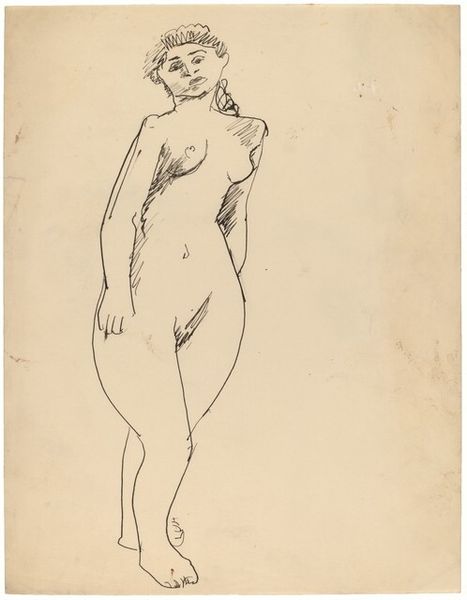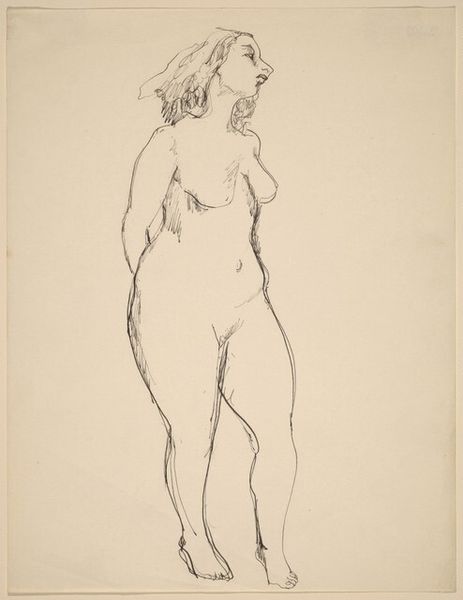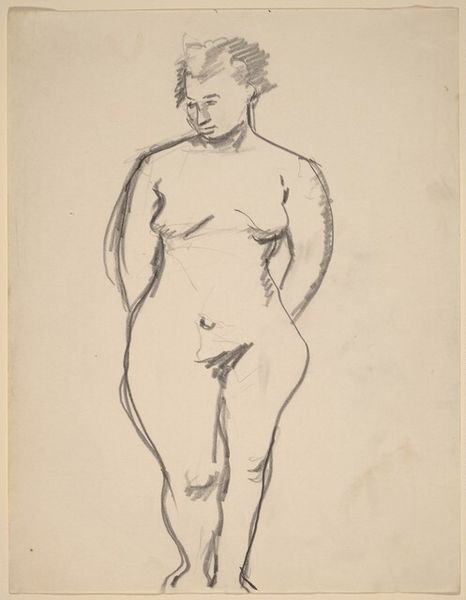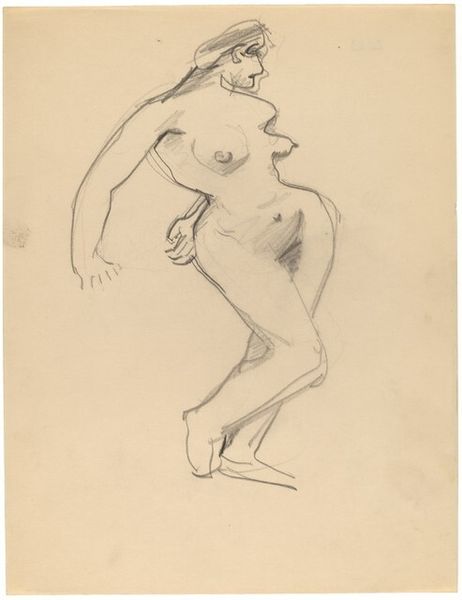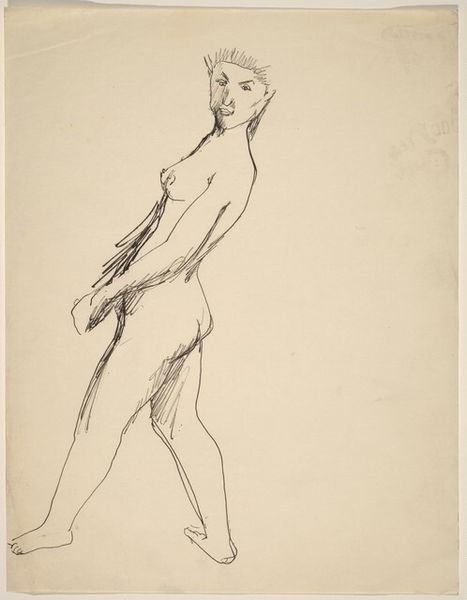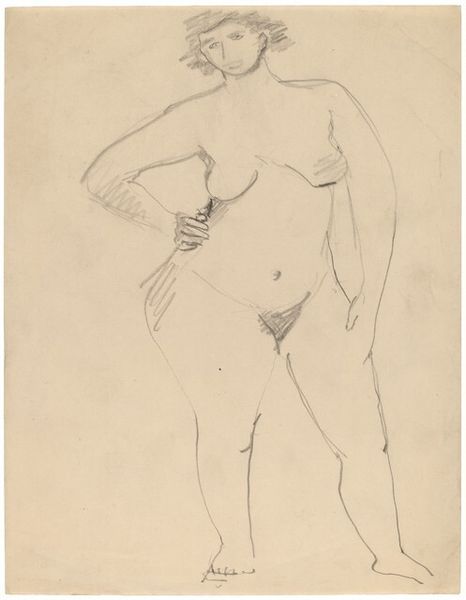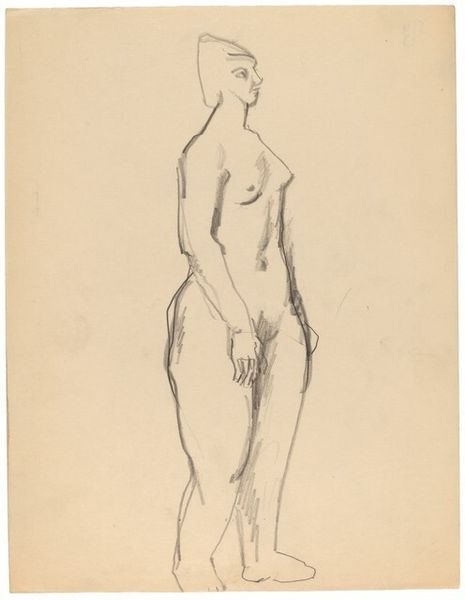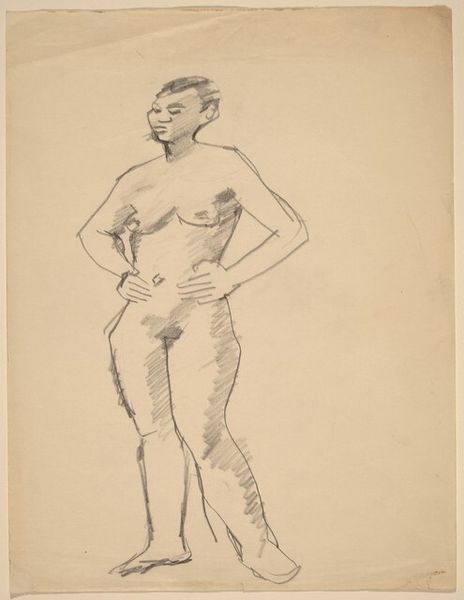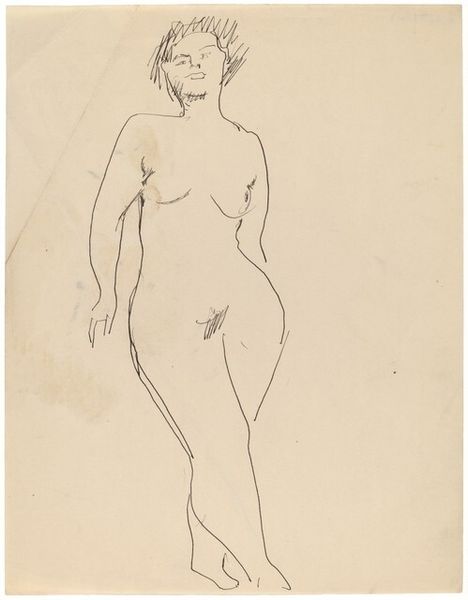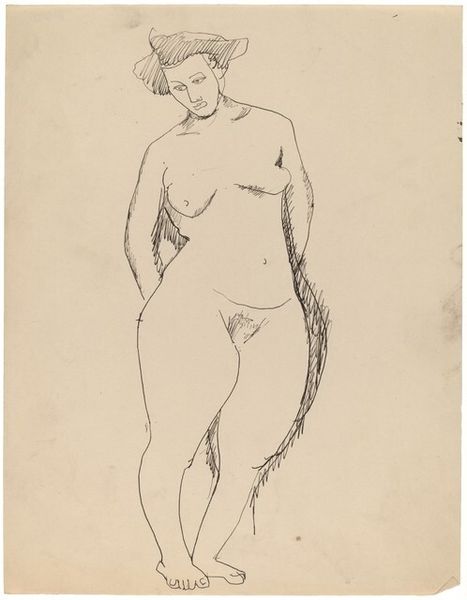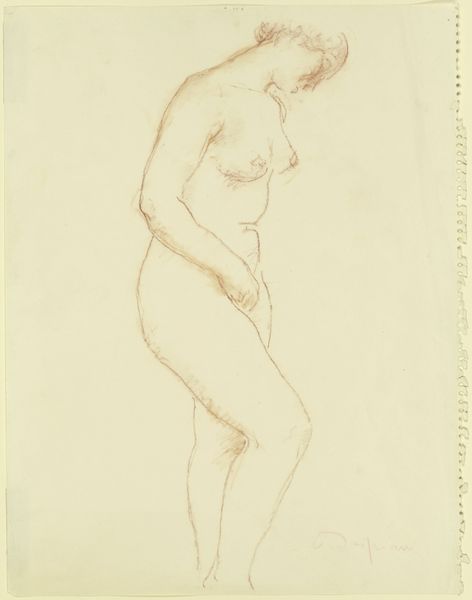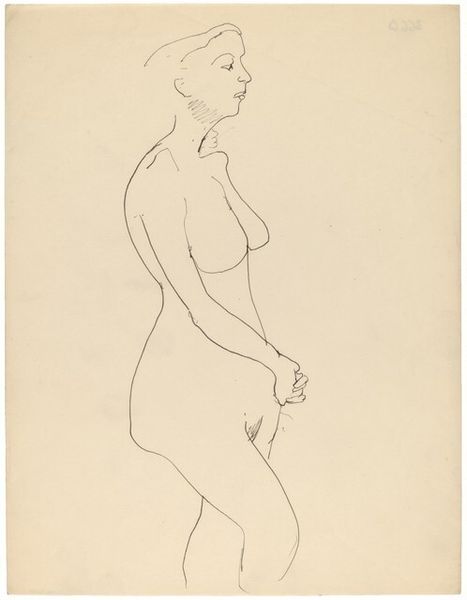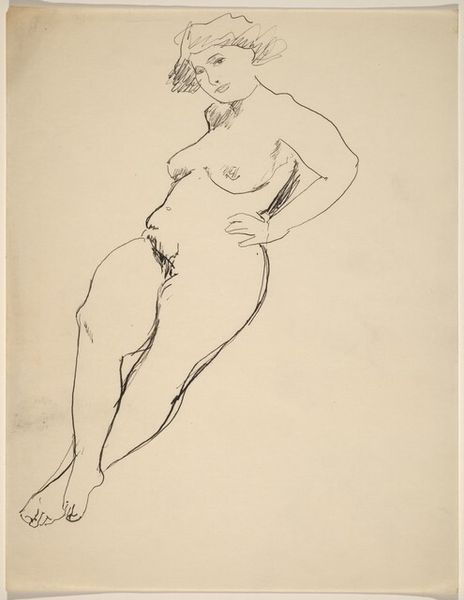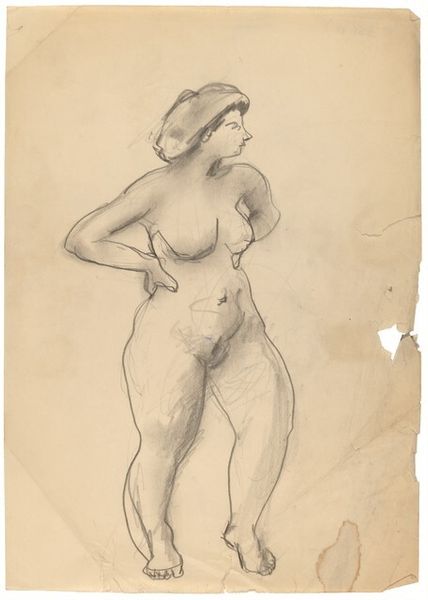
drawing, pencil
#
portrait
#
drawing
#
pencil sketch
#
figuration
#
pencil drawing
#
pencil
#
portrait drawing
#
academic-art
#
nude
Dimensions: overall: 27.9 x 21.6 cm (11 x 8 1/2 in.)
Copyright: National Gallery of Art: CC0 1.0
Editor: So here we have Rothko's "Standing Nude, Three-quarter View Facing Right, Eyes Closed," created with pencil. The lines are so delicate, and it almost feels like an unfinished study. What strikes you most about the piece? Curator: Well, for me, it's the raw materiality. This isn't about some ethereal ideal of the nude, but the direct trace of graphite on paper, a record of Rothko’s hand at work. The social context matters too. This work comes from his earlier years, pre-dating his signature color fields, reflecting an engagement with the human figure rooted in academic practice, that he was then working to break away from. Editor: Right, I can see that transition. The labor is apparent, even in its simplicity. Do you think the choice of pencil limits or enhances that raw feel? Curator: Enhances, definitely. Pencil’s accessibility speaks to the working-class roots of many artists, a practical medium for study and preliminary sketches, before more 'valuable' materials are introduced. Notice also the paper itself: its texture, the visible imperfections. It grounds the figure, bringing it back to earth and the economics of artistic production. Was this piece preparatory, I wonder, or a work intended to be consumed as is? Editor: That's a good question. The intimacy feels intentional. I hadn’t considered the implications of the paper itself being a kind of statement. Curator: Exactly! The support is part of the message. It reminds us that art is made, produced, labored over. Consider what it meant for an artist like Rothko to engage with, then largely reject, traditional methods focused on a kind of fine, unblemished, and rarified craft. Editor: It’s like he's using the nude to examine the very means of artistic representation. Curator: Precisely. It's a negotiation with, and ultimately a subversion of, art history’s power structures. It makes you rethink what “high art” really is. Editor: I'll definitely look at sketches differently now, focusing on the materials and labor involved, instead of just the final image. Thanks for sharing.
Comments
No comments
Be the first to comment and join the conversation on the ultimate creative platform.
